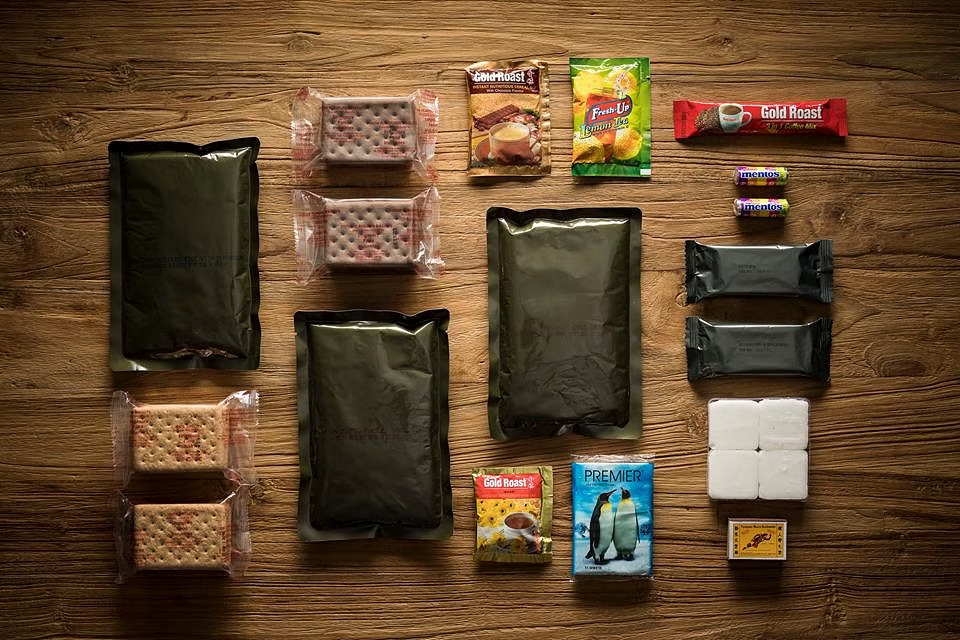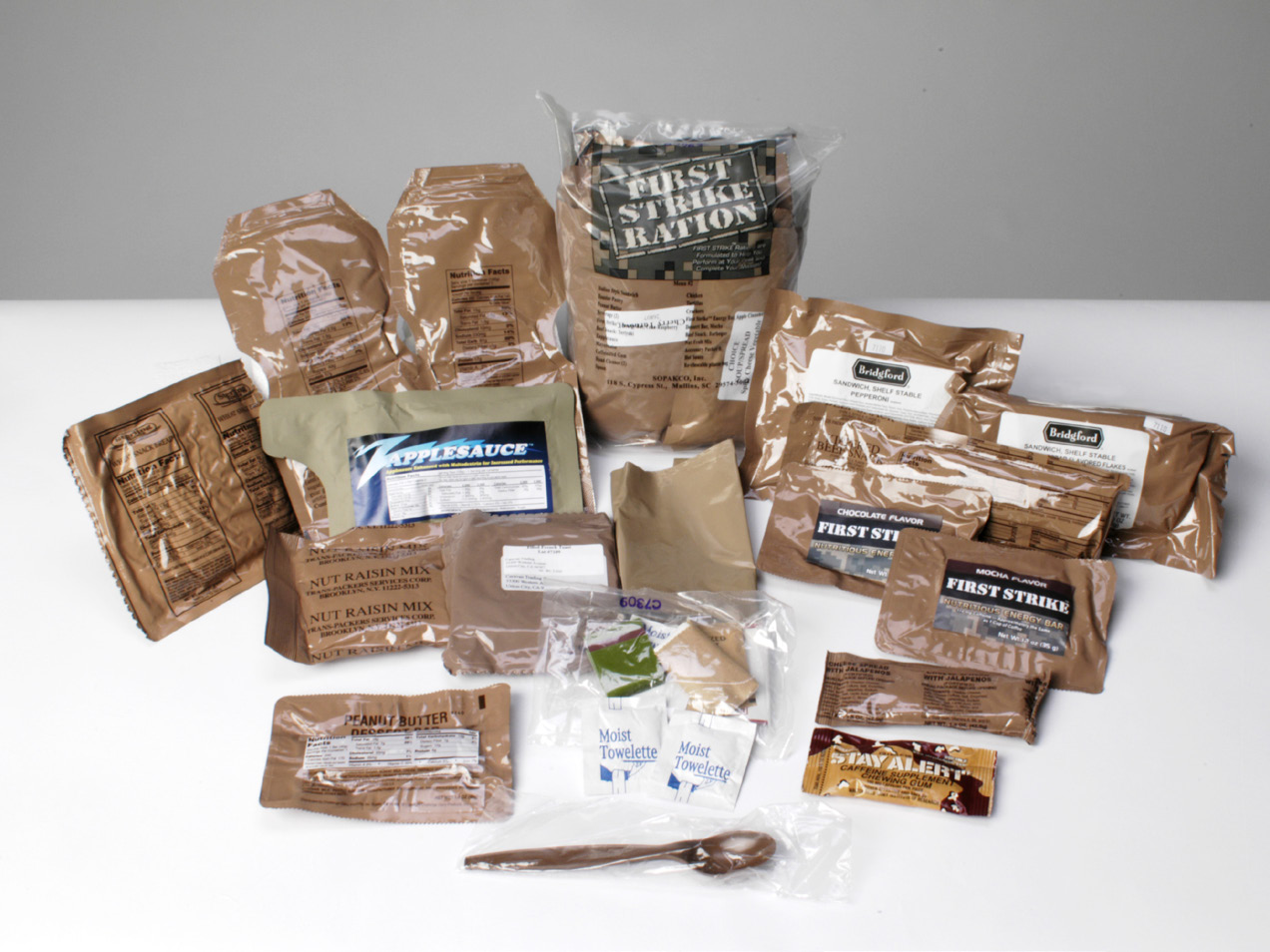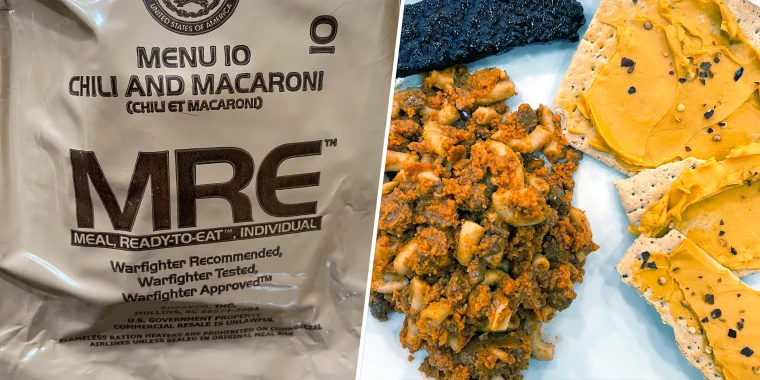Introduction
Navy food, recognised colloquially as rations, is the lifeblood of armed forces all over the world. Further than mere sustenance, it’s a image of solidarity, innovation, and adaptability in the experience of adversity.
In this exploration, we’ll journey by way of the annals of heritage to fully grasp how navy rations have developed from basic provisions to innovative culinary methods, meeting the various demands of troops throughout generations and continents.
History of Navy Meals
Origins of Navy Rations
The roots of armed forces rations can be traced again to antiquity, wherever armies relied on very simple fare like dried grains, salted meat, and challenging bread to maintain troopers on campaigns.
These early rations ended up rudimentary, generally lacking in selection and nutrition, but they laid the basis for a lot more subtle provisioning programs in later on hundreds of years.
Evolution of Army Foodstuff
As warfare turned additional intricate and common, so much too did the need for economical food stuff distribution techniques. The Industrial Revolution ushered in a new period of military logistics, enabling the mass manufacturing and distribution of standardized rations to considerably-flung battlefields.
Improvements in food stuff preservation, packaging, and nutrition science reworked military rations from survival rations to nutritionally balanced foods able of sustaining troops in the harshest of environments.
Kinds of Army Foodstuff
Overcome Rations

Beat rations are developed for swift usage during active engagements, supplying soldiers with the electricity and sustenance they have to have to remain focused and alert on the battlefield.
These rations are generally lightweight, compact, and need minimum preparing, enabling troops to refuel immediately with no compromising their mobility or operational effectiveness.
Field Rations

Field rations are meant for sustained functions in distant or austere environments where resupply may be limited or sporadic.
These rations are extra substantial than beat rations, frequently consisting of canned goods, dehydrated foods, and supplemental snacks to offer soldiers with the energy and nutrition necessary to sustain them more than numerous days or months.
Meal, Completely ready-to-Consume (MRE)

The Food, Prepared-to-Eat (MRE) represents the pinnacle of armed service ration technologies, offering soldiers a complete, self-contained food in a lightweight, resilient package deal.
Each individual MRE incorporates an entrée, side dishes, snacks, and desserts, along with equipment like utensils, condiments, and heating features, enabling troopers to get pleasure from a warm, fulfilling meal virtually any place in the environment.
Specialised Eating plans and Demands
Recognizing that a single dimensions does not match all, armed forces food items companies offer you a selection of specialized rations to accommodate troopers with unique nutritional needs or restrictions.
Regardless of whether it’s vegetarian, kosher, halal, or allergen-free alternatives, military rations are tailored to make sure that each soldier receives the sustenance they need to complete at their very best, irrespective of their unique dietary preferences or demands.
Nutritional Things to consider
Caloric Needs in the Discipline
| Light-weight | 2,500 – 3,000 |
| Average | 3,000 – 3,500 |
| Heavy | 3,500 – 4,500 |
This desk delivers an approximate vary of day-to-day caloric demands based on the action stage of troopers in the area. It’s crucial to observe that specific caloric requirements might differ dependent on components these kinds of as human body composition, fat burning capacity, and environmental conditions.
In the demanding setting of the battlefield, soldiers expend an remarkable quantity of electricity as they carry out their duties, typically experiencing bodily exertion, anxiety, and harsh environmental conditions.
Assembly these heightened caloric demands is essential for keeping ideal overall performance and protecting against fatigue and exhaustion. Military rations are cautiously formulated to offer the essential energy to maintain troops in the area, putting a sensitive balance involving energy density, palatability, and shelf balance.
Preservation Solutions

Preserving the high quality and basic safety of navy rations provides a formidable problem, specially in environments exactly where temperature extremes, humidity, and rough managing can compromise food stuff integrity.
To mitigate these challenges, navy meals researchers utilize a assortment of preservation procedures, which includes dehydration, freeze-drying, canning, and vacuum sealing.
These approaches not only increase the shelf everyday living of rations but also assistance keep important nutrients and flavors, making sure that troopers get healthful, nourishing foods even in the most hard problems.
Nutritional Stability and Health Concerns
Maintaining a balanced diet program is necessary for the overall health and fitness and well-getting of navy staff, but it can be particularly challenging in the context of discipline functions.
Military rations ought to deliver a comprehensive array of vitamins and minerals, together with carbohydrates, proteins, fats, natural vitamins, and minerals, to support actual physical performance, cognitive function, and immune health.
Also, concerns these types of as sodium content material, fiber consumption, and hydration stages are thoroughly managed to handle wellness considerations this sort of as dehydration, gastrointestinal difficulties, and chronic illnesses.
Hanging the proper balance in between nutrition, palatability, and practicality is paramount in making certain that armed forces rations satisfy the assorted desires of troops while promoting very long-expression wellness and resilience.
Packaging and Logistics
Shelf Lifetime
One particular of the principal factors in ration packaging is making sure prolonged shelf life to maintain foodstuff top quality and security over prolonged periods. Military services rations are subjected to rigorous testing to assess their balance underneath several environmental ailments, which include temperature fluctuations, humidity, and exposure to light-weight and oxygen.
Packaging supplies must be robust adequate to face up to tough handling and environmental extremes even though effectively sealing out humidity, air, and contaminants to protect the integrity of the contents.
Innovations these as oxygen absorbers, dampness barriers, and multi-layered packaging have significantly prolonged the shelf life of navy rations, making certain that troops have entry to fresh new, nutritious meals in the course of their deployment.
Portability and Pounds Considerations
Portability is a important element in ration style, as soldiers should have their provides with them all through missions that might contain prolonged marches, tactical maneuvers, or airborne operations. Every single ounce counts when it arrives to packing rations, so packaging supplies should be lightweight, compact, and resilient with out compromising food items safety or shelf lifestyle.
In addition, rations need to be created for simplicity of transport and use in the industry, with effortless serving measurements, resealable packaging, and minimal squander generation.
Balancing portability with nutritional density and palatability is necessary to be certain that troopers have the power and morale-boosting sustenance they need to have to carry out their mission targets efficiently.
Offer Chain Challenges
Protecting a trusted source chain for navy rations offers a complex logistical problem, especially in distant or hostile environments the place accessibility may be limited or disrupted.
Timely shipping and delivery, storage, and distribution of rations demand meticulous organizing, coordination, and infrastructure aid to be certain that troops get adequate sustenance where ever they are deployed.
Things this kind of as transportation logistics, inventory administration, and supply chain resilience need to be carefully managed to limit the risk of shortages, stockouts, or spoilage.
On top of that, issues this sort of as cultural choices, nutritional limitations, and mission-specific specifications further complicate source chain management, necessitating agile and adaptive methods to meet up with the evolving requirements of navy forces operating in diverse theaters of operation.
Improvements in Military services Foodstuff
Technological Advances
New many years have witnessed extraordinary technological improvements in the realm of navy foodstuff, revolutionizing the way rations are designed, created, and consumed.
From point out-of-the-artwork food processing methods to cutting-edge packaging resources, technological know-how performs a pivotal role in improving the security, excellent, and functionality of armed service rations.
For illustration, the introduction of retort pouches and self-heating meal components has drastically improved the benefit and flexibility of field rations, allowing troopers to appreciate hot, freshly geared up foods even in the most austere environments.
Equally, advances in food science and diet have led to the growth of fortified rations tailored to fulfill the certain physiological needs of navy functions, making sure that troops stay fueled and resilient under the most difficult conditions.
Customization and Personalization
Recognizing that dietary preferences and nutritional necessities differ among personal soldiers, army food providers are ever more embracing customization and personalization as vital concepts in ration style and design.
Somewhat than supplying a a person-dimension-matches-all solution, fashionable army rations offer you a array of choices to accommodate varied preferences, cultural backgrounds, and dietary limitations.
Troopers may well have the prospect to choose their preferred foods from a menu of alternatives, permitting them to appreciate common flavors and convenience food items that improve morale and retain a sense of relationship to household.
Moreover, individualized ration kits can be tailored to satisfy distinct nutritional needs or wellbeing issues, ensuring that every single soldier gets the sustenance they need to carry out at their most effective.
Sustainability Efforts
In response to increasing environmental fears and source constraints, armed service companies are ever more targeted on integrating sustainability concepts into food stuff production and distribution methods.
Attempts to lower squander, decrease vitality intake, and enhance source utilization are driving improvements in ration packaging, sourcing, and disposal tactics.
For instance, the adoption of biodegradable packaging supplies and compostable foodstuff containers helps minimize the environmental footprint of navy rations, even though initiatives to source locally grown substances and assistance sustainable agriculture advertise resilience and self-sufficiency in food stuff offer chains.
By embracing sustainable meals practices, military services forces can not only cut down their environmental impact but also enhance operational readiness and resilience in the face of evolving troubles.
Psychological Effects of Navy Food stuff
Convenience and Familiarity
In the midst of the chaos and uncertainty of fight, familiar foodstuff can offer a supply of convenience and stability for troopers much from property. Irrespective of whether it’s a favored childhood snack or a regional specialty, acquainted flavors evoke reminiscences of happier occasions and generate a sense of continuity amidst the upheaval of military everyday living.
Army rations often involve legendary dishes and convenience foods that resonate with troopers on a particular amount, presenting a quick respite from the rigors of fight and fostering a sense of camaraderie and solidarity between troops.
Role in Morale Boosting
Mealtime rituals and traditions perform a critical function in boosting morale and camaraderie among armed service personnel. Sharing a meal with fellow soldiers provides an opportunity for social interaction, storytelling, and bonding, strengthening the bonds of camaraderie and unit cohesion.
Additionally, the act of having fun with a very hot, satisfying meal can provide as a much-required morale boost in demanding situation, giving troopers with a tangible reminder of their resilience and perseverance in the experience of adversity.
Military leaders typically understand the importance of food stuff as a morale-boosting tool, prioritizing the provision of significant-top quality, nutritious rations to assist the physical and psychological nicely-being of their troops.
Cultural Importance
Food stuff is deeply intertwined with cultural identity, and military rations reflect the assorted culinary traditions and heritage of the troopers they serve.
No matter whether it’s a conventional recipe passed down by way of generations or a regional delicacy unique to a unique place of deployment, cultural foods play a critical position in preserving a perception of id and relationship to home for soldiers far from common environment.
By incorporating acquainted flavors and components into navy rations, foodstuff suppliers honor the cultural diversity of their troops and acknowledge the worth of food as a car or truck for cultural trade and knowledge.
What’s more, cultural food items provide as a tangible reminder of the sacrifices and contributions of troopers from diverse backgrounds, fostering a sense of pride and unity amongst army staff throughout the world.
Problems and Long run Trends
Conference Diverse Nutritional Needs
As army demographics continue on to evolve, with an significantly various workforce comprising people with various dietary choices, cultural backgrounds, and dietary demands, meeting diverse nutritional requirements presents a sizeable problem for military foodstuff companies.
Making certain that rations are nutritionally balanced, culturally sensitive, and accommodating of spiritual and professional medical dietary limits demands ongoing innovation and collaboration throughout disciplines this sort of as diet science, foodstuff engineering, and culinary arts.
Furthermore, addressing the nutritional requirements of specialized populations, these kinds of as female troopers, vegetarians, and athletes, necessitates tailored solutions and versatile ration choices to improve performance and wellbeing results across the force.
Addressing Flavor and Palatability
When dietary written content is paramount, style and palatability are similarly crucial variables in guaranteeing that troopers eat an adequate amount of food items to meet up with their vitality needs. Style preferences change widely among men and women and are affected by cultural background, private activities, and environmental variables.
Thus, producing rations that are not only nutritious but also interesting and satisfying to try to eat requires careful focus to flavor profiles, texture, and sensory characteristics.
Incorporating common flavors, regional cuisines, and ease and comfort foods into military rations can enhance acceptability and satisfaction between troops, advertising greater usage premiums and greater total well being outcomes.
Adaptation to Shifting Environments
Military services functions are inherently dynamic and unpredictable, with troops normally deployed to numerous and tough environments ranging from arid deserts to dense jungles to frigid tundras.
Adapting ration techniques to meet the exclusive requirements of each operational theater, which includes local weather extremes, terrain qualities, and logistical constraints, is vital for making sure that troops continue to be adequately nourished and resilient in the encounter of adversity.
Adaptable ration types, modular menu possibilities, and climate-specific formulations help armed forces forces to adjust promptly to modifying environments and operational contexts, boosting readiness and usefulness throughout a extensive selection of mission scenarios.
Conclusion
In summary, armed forces meals, with its wealthy history, diverse kinds, and evolving problems, stays a cornerstone of operational readiness and troop properly-becoming in modern-day warfare. From historic provisions to high-tech rations, military services foodstuff has continually progressed to meet the changing requirements of soldiers on the entrance strains.
As we look to the upcoming, addressing worries these kinds of as conference diverse dietary requirements, boosting style and palatability, and adapting to shifting environments will be paramount in guaranteeing the efficiency and sustainability of army ration techniques.
By embracing innovation, collaboration, and a dedication to excellence, military services foodstuff providers can keep on to assistance the overall health, resilience, and readiness of troops globally.
FAQ
Are armed service rations acceptable for persons with dietary limitations or allergy symptoms?
Indeed, military services foodstuff suppliers provide a selection of specialised rations to accommodate troopers with distinct dietary preferences, religious limitations, or medical ailments.
Vegetarian, kosher, halal, and allergen-free of charge selections are accessible to ensure that just about every soldier receives the sustenance they want although respecting their unique needs and beliefs.
How are navy rations formulated and examined for high quality and protection?
Armed forces rations undergo demanding testing and analysis to make sure compliance with nutritional criteria, basic safety laws, and operational specifications.
Food stuff researchers, nutritionists, and culinary specialists collaborate to build ration formulations that meet the dietary needs and flavor tastes of troops whilst adhering to rigid excellent control actions and meals safety protocols.
What measures are taken to be certain the sustainability of military services ration methods?
Armed service companies are ever more focused on integrating sustainability concepts into food production, packaging, and distribution procedures to lower environmental effects and promote resource conservation.
Initiatives this kind of as lowering packaging waste, sourcing locally developed ingredients, and supporting sustainable agriculture practices help mitigate the environmental footprint of military services ration programs although improving operational resilience and self-sufficiency.
The post What is Armed service Meals Known as? appeared first on MCMFamily.com.




